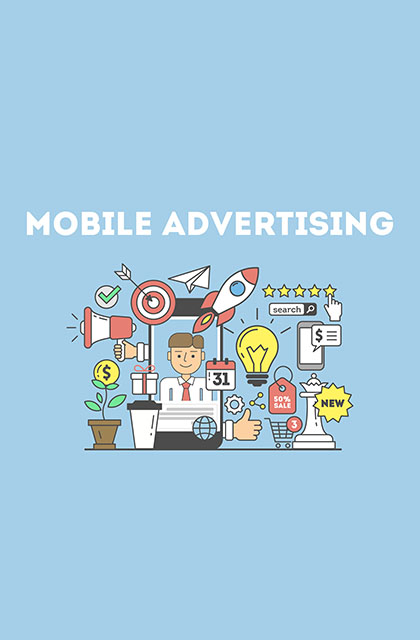The Real Estate Agent Ultimate Guide to Social Media Marketing in 2023 - Part 2
The all-in-one resource to guide you through the world of social media marketing.
Learn more about life as a real estate agent and get exclusive offers!
Picking up right where we left off, let's talk about setting achievable goals.
How to Set Achievable Goals
Your goals are what you hope to accomplish for yourself as an agent. Your social media strategy is simply a vehicle to get you those goals. Every single step of your strategy should point toward your goals.
Some examples of goals you may have: Increase awareness with current clients Connect with new clients Strengthen relationship with current clients Receive feedback from clients * Promote specific business strategies
It's best to pick two or three primary goals and two or three secondary goals to focus on. The idea is to spread your time investment among a portfolio of goals but still remain focused. Find that balance that works for you.

If you have ever taken a business class, or just read about goal setting, you should be familiar with the SMART goals acronym. The SMART model is used in strategic planning by all industries and types of organizations. Once a goal becomes SMART, each identified task or action should meet the requirements
The SMART goal requirements are to be:
Specific: There is a clearly defined, desired outcome by concretely and specifically answering who, what, when, where, why, and how.
Measurable: Concrete, meaningful, motivating criteria. Find a quantifiable way to track your progress and know when you've hit your target.
Attainable: Set challenging goals, but be realistic.
Relevant: The goal is practical in its scope and how it relates to the desired change and timeframes.
Time-bound: Set a start date, end date, and milestones in between.

Once your goals have been clearly identified you get cracking at creating a strategy that fits with each SMART aspect.
Let's say your goal is to connect with leads.
To be specific with this goal, you could narrow this down to "gain new leads in my neighborhood". Consider the type of connection you want to make and how you would differentiate a lead from a prospect or client.
To make this goal measurable, you could say "I want to increase lead generation by 33% each week. My current average is 20 new leads per week, and I will increase that number to 26 using a social media marketing strategy on top of my traditional efforts." This way, you can analyze your progress using data and make sure you are on track to achievement.
To make the goal attainable, don't overshoot. Don't aim for increasing leads by 1000%. You'd just become frustrated if you don't achieve it. Instead, set goals that stretch your current abilities. Go for a number that seems just out of reach, and then go slay it!
Your goal should be relevant. One of your primary goals is likely: "To grow my business". Your SMART goals should tie into a big-picture goal and get you closer to success.
Your goal should be time-bound. Without deadlines, this would be a SMAR goal, which is DUMB! A time-bound goal would say something like, "I will increase my weekly lead generation by 33% in 30 days. I will launch my social media strategy today."
Be smart. Make SMART goals.
Social Media Marketing Guide Part 1
Don't forget to check out part 1 of the social media marketing guide!

Social Media Metrics
A metric is a measurement and is a term often used to describe measurement in social media analytics tools. Most platforms will come with a basic dashboard to analyze the traffic you're getting with your posts. This can include total views, how people have interacted with your post, how effectively you're reaching your audience, among other helpful tools.

To break it down further, there are actionable and vanity metrics. Actionable metrics can be shown as having an impact or tie into real business objectives, your goals. Vanity metrics cannot be shown to have an impact or tie with your objectives.
Actionable metrics would include something like tracking the number of people that traveled from one of your social media posts to your business website to sign up for a newsletter or request more information.
Vanity metrics cannot be quantifiably analyzed, but that's not to say they aren't helpful. Let's say you put up a social media post and a few users started a relevant conversation in the comment section. None of them visited your website or further interacted with the post in any way. However, due to that commenting activity, one of the user's followers saw your post at the top of their feed. This person is looking for an agent soon and requests more information from your website. This hypothetical situation happens often. There are many untrackable ways that people will come to find your content. Vanity metrics are the 'assist points' of social media metrics.
Some more terms you will encounter when analyzing social media metrics are buyer persona, voice, and tone.
A buyer persona is a composite profile of your ideal customers that can be built from data gathered via national, local, and online resources, as well as through surveys and interviews. It's more than just identifying your target audience. Think about what the perfect customer would be, and how you would serve them in a perfect way. Think about your audience on an individual level so you can tweak your approach accordingly.
For example, you might have chosen first time home buyers as your target audience, but do you know why they're looking to buy? You know (assume) they can qualify for a home, but do you know how they're getting that money? Are they getting help from relatives to make their down payment? Are they part of a one- or two- income family? Knowing the answer to these deeper questions will help improve your message. If you're having trouble finding answers, you can always use social media analytic tools, surveys and interview posts, or industry research.
Voice is the intentional and consistent expression of a well-defined social media personality.
Tone describes the strategic implementation of a social media voice tailored to the specific audience, situation, objective, and social media platform being used.

Voice and tone describe the style of your message and how you want to convey it. Start by asking yourself a few questions:
- How would I describe my best self-attributes or personality?
- What is my relationship with my clients and prospects?
- Are there other public personalities (in or out of real estate) similar to mine?
- How do I want to be perceived by my clients and prospects?
- What adjectives would I use to describe the opposite of myself?
With those in mind, you will be able to keep your social media voice and tone consistent. Pick your platforms and analyze how your presence is working out.
Developing a Posting Plan
The most crucial aspect of social media marketing is developing (and sticking to) a posting plan. The key is to stay consistent.
Do not post at a low-traffic time. Each social media platform has its peak days and hours. For example, according to a 2023 study by Coschedule, Facebook users tend to be more active later in the week (Thursday through Sunday). Content posted in that timeframe has a 32% increase in engagement compared to the rest of the week.

Do not post too much content at once. Facebook users definitely won't appreciate ten daily posts, but Twitter users might. It's all up to you and your audience.
Here are some general tips to guide your posting habits on the main platforms.
Facebook users, as we stated, are more active later in the week. Peak hours are 9-10 AM, 12-1 PM, and 4-5 PM. Most studies suggest posting high-quality content at lunchtime, 1 to 4 times a week.
Instagram users peak at 8 AM, 1 PM, and 9 PM. Friday is the busiest time of the week. Remember, this platform is all about visual presentation and simplicity. Avoid posting more than once each day. Concentrate your content pushes at night and on weekends.
Twitter users are most active at 8-10 AM, 12 PM, and 7-9 PM, especially on the weekend. It's best to spread out lots of small content snippets throughout the day.
LinkedIn users tend to be online at 12 PM. Wednesday is the most popular day of the week. These users expect a professional presentation, so consider sticking to articles and networking.
Across the board, it's best to post around people's work schedules. Once your posting plan is in effect you will just need to decide which content goes to which platforms. Sometimes it can be more than one.
Source: Coschedule

Social Media vs. Other Forms of Advertising
One of the best parts about social media is that it's free of monetary charge unless you decide to use advanced analytics and paid advertisements.
We have established that a social media presence is essential in today's world. With that presence, you may want to use advertisements. Social media ads offer a great bang for your buck and are arguably the most effective way to reach the homebuyers' market.
If you advertise through Facebook, you'll likely be charged on a cost-per-click (CPC) basis. The average CPC is $0.27 per click. As of 2016, the average total cost for a Facebook ad was $7.19. Instagram averaged about $6.70. These obviously will vary depending on how many people see your ad and interact with it. Other factors include the type, quality, objective, and add-on features of the post. However, the bottom line here is that many basic social media advertisements are a cheap and effective way to communicate with your audience.
Three alternative forms of advertising are print, radio, and television commercials. Let's discuss the pros and cons of each.
Print ads include newspapers, posters, and billboards. These are tangible ads. The best part about this form of advertising is that your audience can look at it for as long as they need to. This is great for referencing your contact information. However, social media achieves the same purpose. Users can easily "save" your post if they wish to contact you soon, and they can certainly hold onto your ad longer than a piece of paper would last.
The cost to advertise in a printed newspaper varies depending on the size of the ad, color or black/white, location within the paper, and of course the number of readers. According to a 2018 Newspaper Advertising Guide, the price of a 1/8 page ad in the Milwaukee Journal Sentinel would cost around $2,961, whereas a small town paper like the Bozeman Daily Chronicle (of Bozeman, Montana) could set you back $347.

As for billboards, the main plus would be if you have a brick and mortar office to meet with clients, or if you regularly show model homes in the immediate area. These are a way to take your business sign and blow it up to show a large number of people.

However, billboards are incredibly expensive, even more so if you wanted to be alongside an interstate or other high-traffic areas. The cost to get the board made plus rent far surpasses typical newspaper ads and certainly social media ads. The audience is also going to be as broad and untrackable as it gets.
Radio and Television Commercials
Like billboards, radio and TV commercials are only there for several seconds before they disappear. In most cases, people cannot go back to hear your message again or gather contact information. The cost is hard to average because it varies greatly by the audience, location, duration of the ad, and so on.

Your social media ads can easily include a short video that is far more effective and engaging than traditional forms of advertising. People can rewind and save your post as often as they like, and you can control what kind of audience receives your ad in their feed. Of course, radio and TV commercials are virtually untrackable as well. Not social media!
Types of Advertising Methods
Now that you know all the inner workings and best practices for social media marketing, it's time to discuss the different methods of approaching your audience. Yeah, there's more than one.

Direct Response Marketing
Direct response marketing is designed to encourage an immediate response from and compel your audience to take some specific action, such as following you on social media, opting into your email list, or calling you about a listing.
Some characteristics of this method are that... It's trackable. When someone responds, you know which ad and which platform was responsible for that response. In other words, a trackable ad would let you know whether a person is responding to an ad from Facebook, Twitter, Instagram, etc.
It's measurable. Since direct response ads will allow you to know which ads are being responded to and how many leads you've generated from each one, you can measure exactly how effective each ad is. You can then drop or change ads that aren't giving you a return on investment.
It uses compelling headlines. Direct response ads usually use a compelling message of strong interest to your target audience. It uses attention-grabbing headlines and copy. More often than not, direct response ads look more like a status update or editorial post than an ad, which makes it at least three times more likely to get read.
It targets a specific audience. Direct response ads aim to appeal to a narrow target audience.

It demands a response. Direct response ads have a call-to-action. It includes a way for people to respond and a way to capture those responses. Interested, probability leads will be given easy ways to respond, such as a phone number, website, or email address. When a prospective lead responds, as much of the person's contact information as possible is captured so that they can be contacted beyond the initial response.
More than ever, customers are turning to social media to decide what to purchase. A 2012 survey examining what consumers like to see companies offer on social media found that 84% preferred coupons, 69% preferred sampling new products, 61% like perks such as free shipping, and 53% enjoyed getting sneak peeks and new products.
People expect some benefit from following brands on social media, and direct response marketing can address this by encouraging them to take advantage of special opportunities.
In the context of real estate, consider offering "real estate coupons", referral bonuses, or perks like free shipping. Have a clear call to action to encourage prospects to reach you.
Getting Close To Renewing Your Real Estate License?
Get ahead of schedule and take your continuing education course online!
Persuasive Advertising
Persuasive advertising is a type of product promotion that aims to persuade a consumer into buying a particular product, especially in the presence of several similar products in the same category.
Robert Cialdini describes six elements to effective persuasion in his popular book Influence.
Reciprocation depends on the old theory that if you give something as a gift and then ask the recipient for a favor, they'll do you a solid and give you what you're asking for.
For example, you may offer your followers exclusive content that is valuable to them (such as a how-to guide for new homebuyers). In return for giving them this valuable content, you may ask them to follow you on Twitter or sign up for your email list
Social Proof is a physiological phenomenon where people assume the actions of others in an attempt to reflect correct behavior for a given situation.

Reviews are an example of social proof. If you see that a restaurant has over 1,000 reviews and 5 stars on Yelp, you will be instantly inclined to give that place a try, right? Follower counts, number of comments, and share counts on each of your posts affect how people judge your content. Having high numbers boosts your public image and makes everyone more inclined to stop scrolling and read what you have to say.
Liking is as simple as it sounds. Do people like you? Interact with your followers as you would at, say, a cocktail party. Be friendly, but professional. Maybe throw in a little humor when appropriate.

Authority means giving your audience reasons why they should be listening to you. So what does authority look like on social media? Try to foster and maintain relationships with other well-known people in the real estate industry. Did a popular agent or brokerage share your post? Reach out to thank them. Did an influential real estate publication or website publish one of your articles? Share that with your followers!
To gain authority with potential clients, you need to highlight your achievements on social media platforms so that your followers know that you're the real deal.
Scarcity means you have a limited supply of something. In terms of social media, your time is your greatest asset, and it is something that you could leverage with scarcity
Consider limiting your interactions when you start to become busy. Let people know when and how to reach you specifically. They will value the time they have to contact you. Watch your timing and set deadlines. Of course, this does not mean you should cut off contact with potential clients, but setting a time and place to chat will improve your interactions.
Commitment is the last step. Throughout the process of connecting with your social media platforms using the steps above, you should ask for small commitments. For example, let's say you've written up some neighborhood guides and made them available to your followers to download. Before they download ask them to share the guide on social media. After they've downloaded, remind them of their new responsibility to share. If you push these small commitments you will see results because most people dislike their own inconsistencies. If they commit to something, they will likely do it.
Brand Advertising
Brand advertising aims to make a brand name synonymous with a quality product or service so that it is immediately recognized. You typically see them on website banners, TV commercials, and billboards. Apple, Coca-Cola, Toyota, these all use brand advertising frequently.
People can have brand too.

Your personal brand as an agent will affect how your clients and potential clients see you. Personal brands rely on your establishment of identity and credibility. Connecting with clients and having them instantly think of you when they hear "real estate agent" is the best way to spread your personal brand like a wildfire.
At AceableAgent we take your role as a growing real estate agent seriously. We hope you learned a lot from this two-part guide to social media marketing. To learn even more, check out our online, mobile-friendly course: Nice to Tweet You: A Beginner’s Guide to Social Media Marketing.
And if you're just getting into the real estate game you can start getting your license today. You can even take breaks to scroll your feed! Don't worry, we won't tell.
